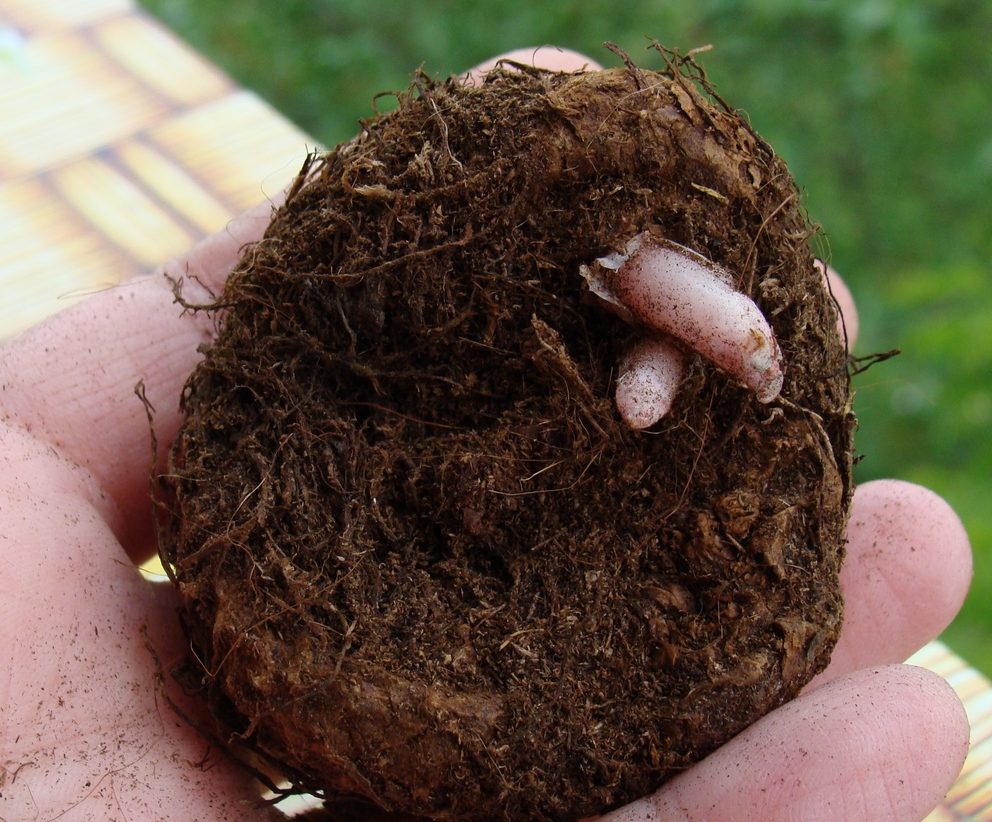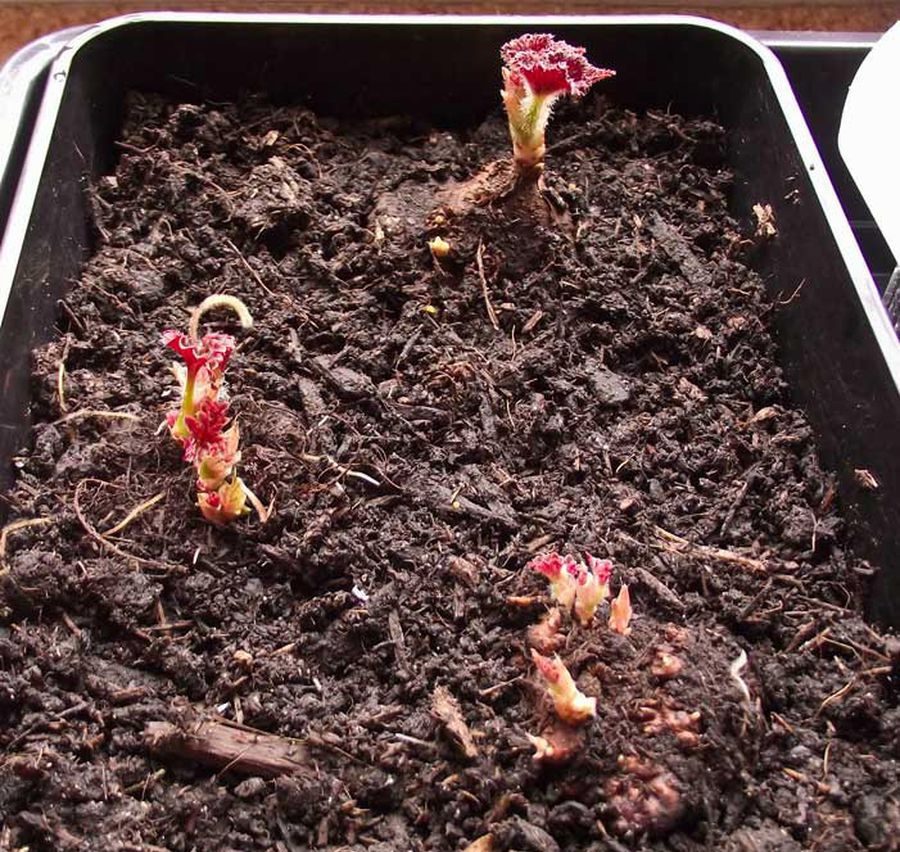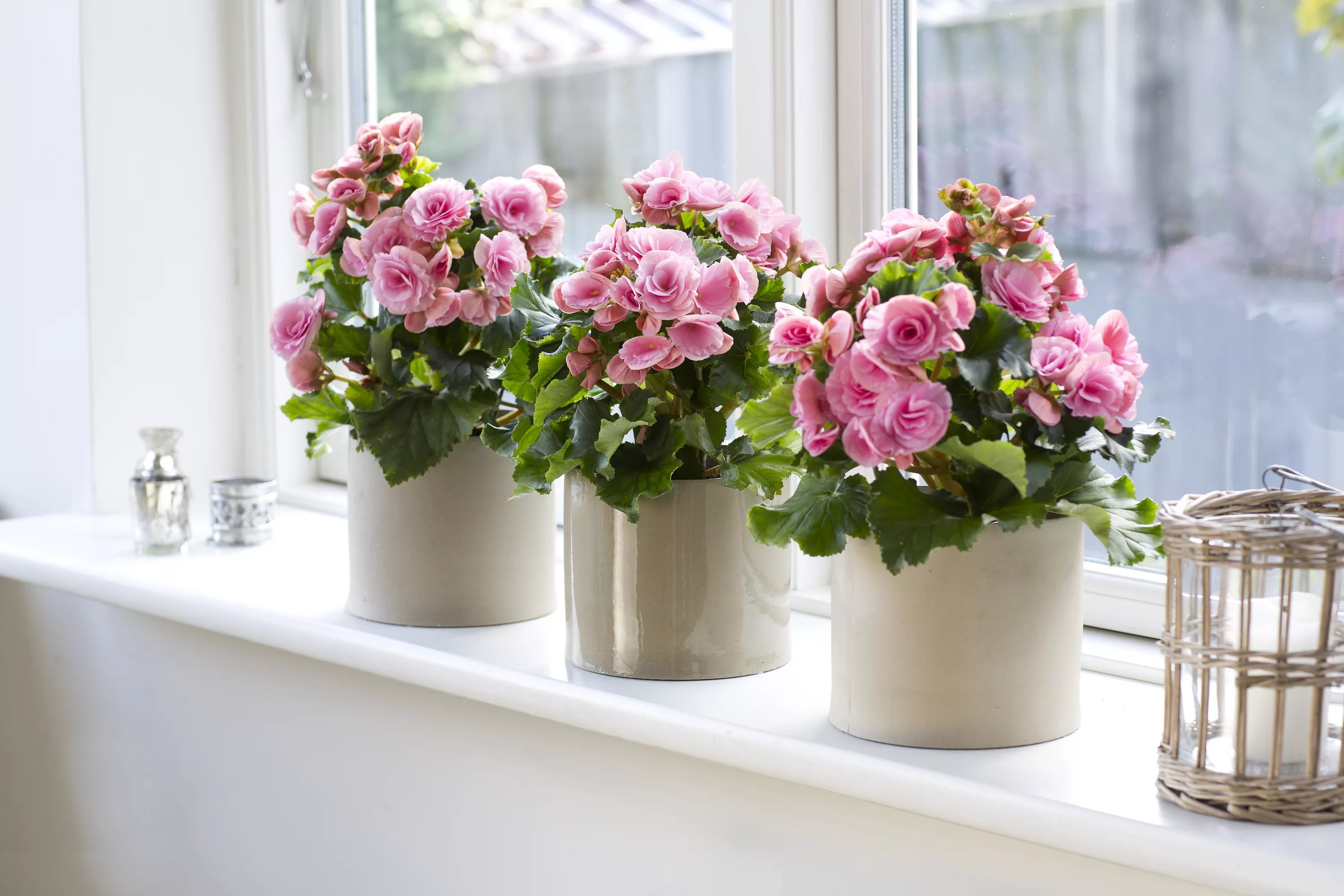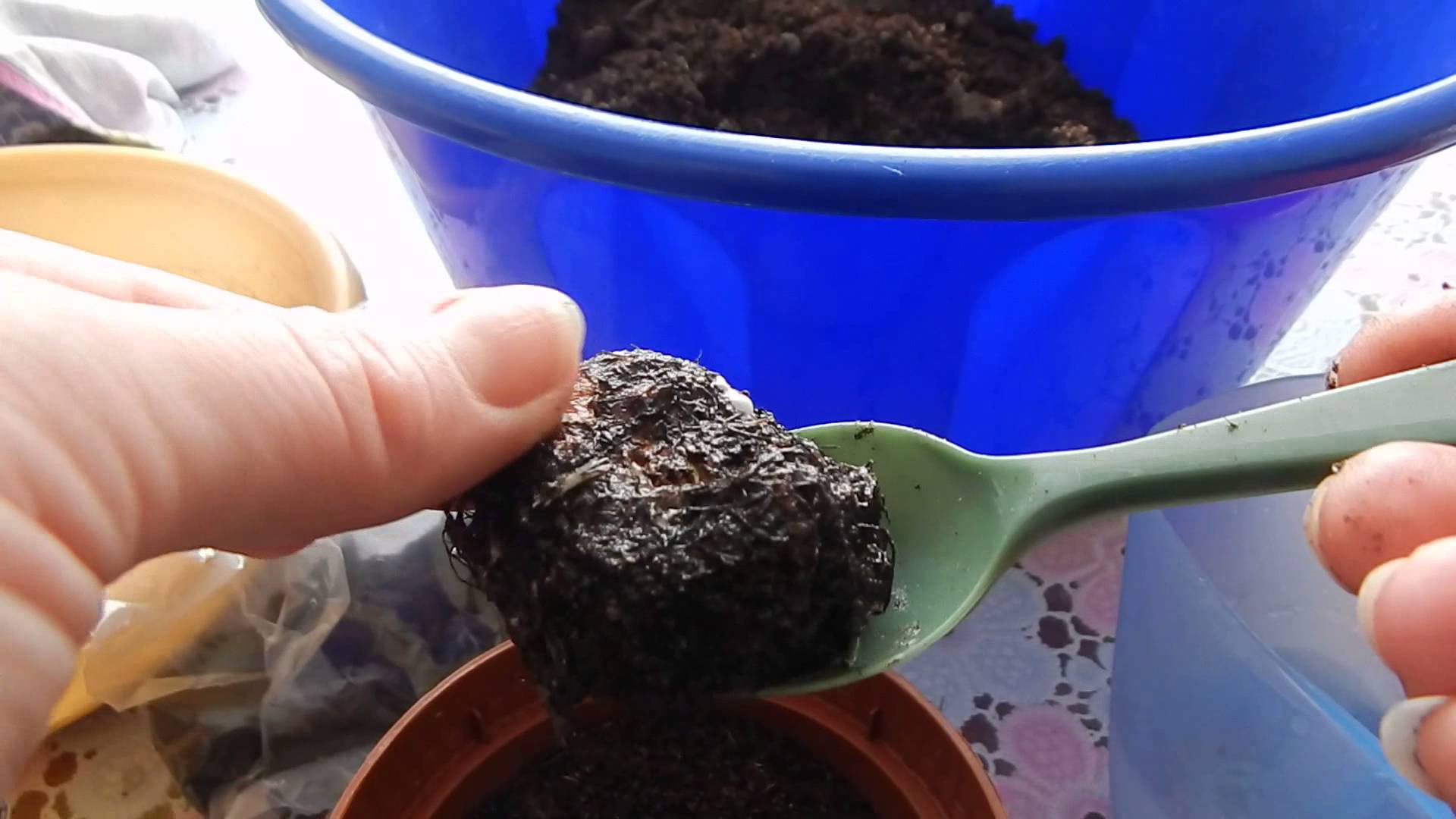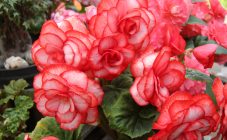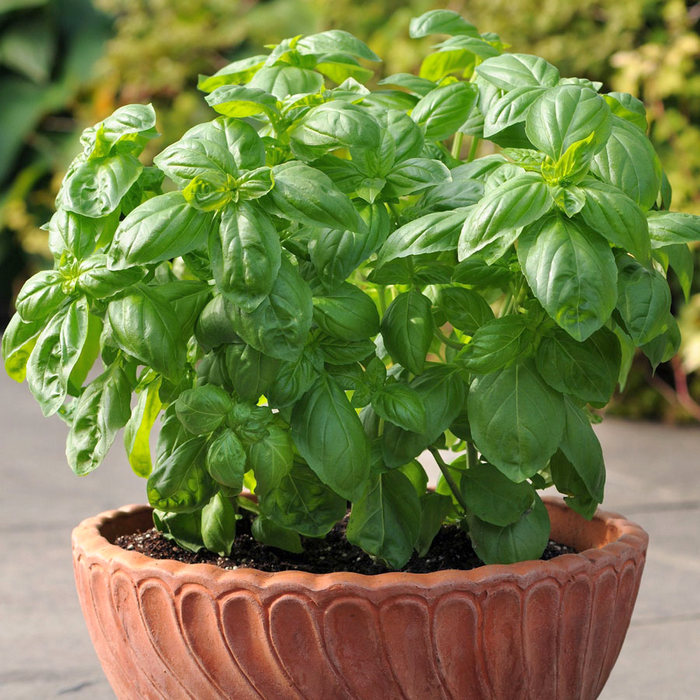Content:
Tuberous begonia is known for its gorgeous flowers. They refresh the space, creating an atmosphere of comfort and coziness. Having learned the secrets of care, observing the conditions for planting in the ground, each grower will be able to get a charming plant in the near future. How to grow this flower is described in the article.
How to properly plant a begonia tuber in a pot
It is not difficult to plant a flower in the ground, it will take a minimum of time. All that is needed is to organize suitable conditions for the flower: sufficient lighting, timely watering, adherence to the temperature regime. The planting procedure is simple.
Tuber preparation
Before planting tubers in the ground, they need to be prepared in a special way. First, you need to clean the rotted sprouts from the bulbs. In the case of a large tuber size, from 6 cm or more, it is recommended to divide it in half. Charcoal is used for powdering the cuts.
Secondly, the peeled bulbs must be placed in a fungicidal solution to avoid fungal growth. Keep tubers in it for 30 minutes. In the absence of a fungicide on hand, potassium permanganate of 1% concentration, which is always in the home medicine cabinet, is suitable. Hold in a pink solution for 40-45 minutes - this time is enough for disinfection.
The process of planting tubers
Place the container in which the bulb will be planted on a pallet. It is necessary, since beginner begonias require frequent and abundant watering. Lay out the bottom with drainage from stones, expanded clay. Pour earth on top. The surface of the soil should reach 3-4 cm from the edge of the planting container. Make a recess in the center, plant an onion.
Each begonia tuber consists of two parts: convex and concave. The convex part is placed in the ground. Concave - remains on the surface. One third of the tuber should be visible. With the appearance of sprouts, sprinkle this part with earth.
Sprout care
After planting the tuber in the soil, it is necessary to moisten the soil with sufficient water. Place the landing container in a bright, sunny place, avoiding direct sunlight.
Several recommendations for accomplishing this task:
- the best place to place a flowerpot is east or west;
- in strong sun, you need to close the curtain or horizontal blinds on the window. As an option for shading, other indoor plants located nearby can act, which will not be damaged by direct sunlight;
- if the container is located on the southern windowsill, you need to move it away from the window closer to the edge;
- observance of the temperature regime: the recommended mark is 20-22 C ° in the room, not higher. It is worth remembering that tuberous begonia comes from tropical countries. Moderate humidity and light are required for its growth and development.
Water the plant in moderation so that the soil remains moderately moist. It is worth avoiding excessive ingress of water on the bulb: this can lead to its rotting and the death of the entire flower. The first shoots appear after five to seven days. And after 15-20 days, you can already admire two or three leaves that have appeared.A month later, the first flowers are formed, meeting the onset of spring.
Planting begonias outdoors
As noted above, it is possible to plant a plant in a garden plot only if it is certain that there is no frost. In the central part of the country - late May-early June.
As early as February, experienced gardeners recommend buying bulbs. You should only buy them from a trusted manufacturer. Healthy tubers should not be damaged or moldy. Only such planting material will remain until the time of disembarkation in a cool room.
Prepare the onion before planting. To do this, you need to place the tubers cleaned from dead roots in a fungicidal solution for half an hour. The proportions should be clarified by reading the instructions for the tool.
If the flower already has roots on the surface, a shallow pot with drainage at the bottom is perfect for planting it. Crushed stone, expanded clay, brick can be used as drainage. In advance, you need to flavor the soil with minerals. You can purchase ready-made soil in a specialized store. For self-preparation of the soil, you need to mix leafy soil, peat, humus, sand. There is no need to compact the soil.
If several plants are planted at once, a distance of 10 cm must be observed between them. As noted above, the concave part must be planted in the soil. A third is convex - it remains on the surface, soon sprouts will appear on it.
It is not necessary to germinate the plant by creating greenhouse conditions for it. Rapid adaptation to the environment should take place. A place for a flower is chosen with a sufficient amount of light, without direct sunlight. Requires no drafts and a temperature of 15 to 17 ° C.
A more energy-intensive method is planting in a flower bed using a different covering material. Also an effective way. Well suited for those who live near the planting site.
A semi-shaded place without wind is perfect for landing. The soil must be loosened, nutrients must be added.
When planting several begonias in a row, you must maintain a distance between the bushes. For large bushes, the distance should be 30 cm, for medium - 20, for small - 15.
Tuberous begonia care at home
For begonia, tuberous care at home is not particularly troublesome, it includes:
- watering;
- fertilizer;
- top dressing.
After planting, the begonias must be properly cared for. During the growing season, the bushes love irrigation in the early morning. It is worth remembering that no water should get on the bulbs. Water the plant around.
From late spring to mid-autumn, begonia pleases with its abundant, lush flowering. Supports are required for the bushes to prevent breakage of the shoots. During the flowering period, moderate watering.
Be sure to apply useful mineral fertilizers to the soil. Use organics as well. This contributes to the normal development of the plant and a large number of flower buds. Enough up to 3 dressings per season.
How to propagate tuberous begonia at home
There are three ways to propagate a plant:
- using seeds;
- tuberous division;
- by cuttings.
The plant has small seeds. They are sold in a special shell, which is soluble upon planting. In the case of homemade seeds, it is recommended to mix them with sand. Sowing is necessary in February, without the use of drainage, nutrient soil. In this case, the flower will have time to please with its charming flowering already in the first month of summer. And in October, the bulb is completely formed. Close the landing container with a film, maintaining the overall temperature of the room at 25 degrees. After two weeks, the first shoots are formed. When a couple of leaves have appeared, the seedlings must be placed in separate pre-prepared pots.
If we resort to tuberous division, then large tubers aged two or more years will need to be divided into parts with a knife. Sprinkle the surface of the cut with coal, then place it in boxes with earth.
The most laborious method of reproduction of tuberous begonia is cuttings. For this method, in the spring or autumn, the bulbs must be unscrewed from the mother plant. To treat the "wound" sprinkle with charcoal. For the faster appearance of roots, greenhouse conditions are organized. The sprout, placed in the ground, is covered from above with a plastic bottle. Already a month later in such conditions, roots will appear. The planting container can now be moved. Next is the usual care.
How to keep begonia tubers until spring at home
With the onset of the autumn period, it is worth reducing watering and fertilization. Part of the plant above the ground dies. When all the leaves have fallen off and only branches remain, you need to cut off the tops. After two weeks, you can dig up the bulbs for a dormant period.
Place sphagnum, moss or peat in containers for wintering. The bulbs will survive this period perfectly. Store them in a dark and dry place at a temperature of no more than 5 ° C. Be sure to keep an eye on the bulbs. At least twice in winter, rotting and dried tubers must be removed.
Bushes grown from seeds retain their leaves and shoots in the first year. They should be dug out before the first frost, placed together with an earthen lump in boxes 15 cm high. Choose a well-lit room with a temperature of no more than 15 ° C. The moisture content of the soil must be monitored throughout the winter. When it gets warm, the bushes will grow actively. Before planting in open ground, place them in planting containers and adapt the plants to the growing conditions in the garden area.
Tuberous begonia, planting and care at home of which is simple, so it can be called not a capricious plant. Knowing all the intricacies of planting and further cultivation of tuberous begonias, you can grow a gorgeous plant that will delight you with abundant flowering and bright greenery.
